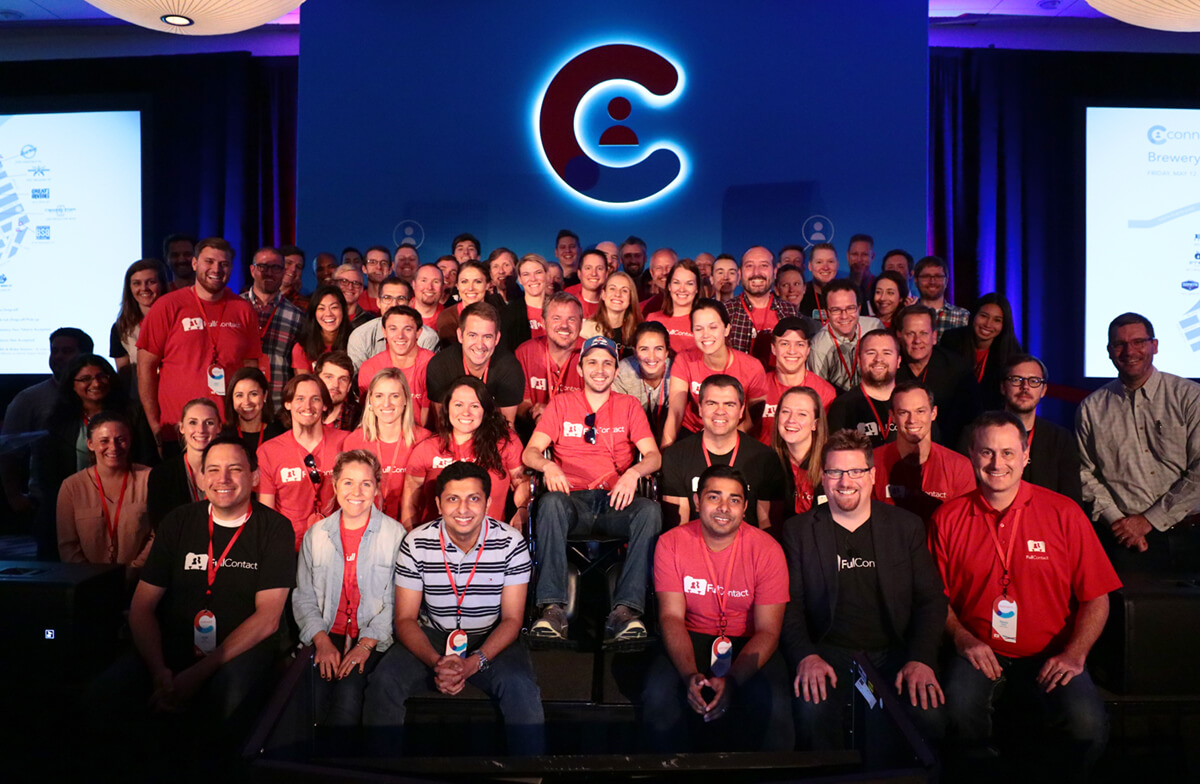Inside Story
Why personal conversations are fueling the new leadership model
Do you have the courage to be vulnerable? SaaS company FullContact thinks it’s the key to a successful organization.<br>

FullContact knows your customers. Their SaaS platform transforms email addresses and domain names into complete audience profiles. And inside their office walls, they really know their employees. Here’s their secret.
From Peter Drucker to Jack Welsh to the late Steve Jobs, there are many inspiring ways to lead a company. And when you’re in the early stages of growth, creating the right culture can set the foundation for success for years to come.
So how do you do this? Well, obviously you need to be pretty smart—but not just in the traditional sense. The new leadership model is built around emotional intelligence, or “EQ.”
For FullContact, emotional intelligence rides alongside our mission to help people build better relationships. And it’s not just us. One study found that 71 percent of employers value EQ over IQ.
Building emotional intelligence—particularly trust—starts with being vulnerable. Vulnerability has become part of our organizational DNA.
Why? Because it gives way to an open, honest, and authentic culture that transfers over to internal processes, external communication, innovation, and learning.
On the flip side, leadership that lacks vulnerability can have an adverse ripple effect.
Here’s how.
The cost of leading without vulnerability
In the business best seller The Five Dysfunctions of a Team, trust is listed as the foundation of all other leadership principles. And a lack of trust can spiral into team dysfunction.
Without trust, you don’t develop deep relationships with your peers, and that lack of cohesion carries over to relationships with customers, partners, and stakeholders.
So where does vulnerability fit into all this?
When people are brave enough to be vulnerable, it gives you a glimpse into their likes, interests, and motivations. This openness allows people to relate to each other. And empathy is key to building rapport and understanding within your team.
But when you lack awareness of a person’s feelings or mood, you lack the ability to connect. And with no connection, there’s no collaboration. In other words, without vulnerability, there is no trust.
Sounds pretty scary right? At FullContact, we thought so too.
We’ve realized that opening up about having a bad day at the office or a conflict at home has transformative leadership consequences. I’ve seen this first hand. By sharing my own experiences and encouraging others to do the same, I’ve seen individuals grow and my team unite.
Ready to flex your emotional intelligence muscles?
You’re looking rather yellow today
When was the last time you asked yourself “How am I feeling today?” “How is my body feeling?” “How is my breathing?”
FullContact CEO Bart Lorang doesn’t think we pause to ask ourselves these questions often enough. So we ask them during our personal check-ins, something we do at every staff meeting, daily huddle, off-site, and board meeting.
Check-ins are simple: everyone starts off by sharing how they’re doing with the rest of the team. We express this through three colors:
Here’s where trust-building comes into play. Each person shares the why behind their color, allowing others to see them in a more vulnerable state.
I’ve witnessed the full range of colors from executives, colleagues, and direct reports. People have shared when they’re stressed about a work deadline or exhausted from a business trip. They’ve reported being calm after a relaxing getaway with their partner. They’ve been anxious because a close friend experienced serious illness.
Whatever the color, the principle is simple: we increase empathy by learning and sharing with colleagues. It’s a powerful leadership and team-building practice that helps other people see you in a more personal, more human light.
Another way we encourage empathy in team meetings is by having everyone quickly share a personal and a professional best from the previous week.
Sharing successes fosters personal conversations and drives stronger relationships—now you and that person you’ve been making awkward eye contact with the past two months have something to talk about.
Of course, the increased understanding, honesty, and vulnerability here at FullContact carry beyond our company walls. We’re able to extend that emotional intelligence to external interactions as well, which ultimately means our customers like us more too.
Do you have the courage to be vulnerable?
So what takeaways can you apply to help build trust through vulnerability, and to improve your organization’s leadership and culture?
- When you’re vulnerable, you create trust.
- When you create a culture of trust, people feel safe.
- When people feel safe, they’re more likely to be open and engage in constructive conflict.
- When people engage in constructive conflict, better decisions get made faster.
The last point can’t be overstated. Trust does more than just create alignment. It creates an atmosphere of risk tolerance and innovation.
You’re more willing to offer your point of view when you feel safe. You trust the people in the room to hear you. And even if the ultimate decision taken isn’t what you suggested, you feel more able to “disagree and commit.”
Checking in with colleagues and sharing personal and professional wins are two simple actions you can take immediately. Give it a try. It’s been successful at FullContact. I hope it’s equally successful for you.




